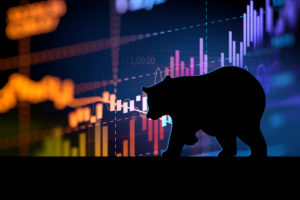What to Expect When Volatility Strikes

Volatility, as measured by the CBOE Volatility Index (VIX), takes into account the number of puts and calls being bought and sold on S&P 500 stocks. When the market is crashing, the VIX moves higher, and when the market is soaring, the VIX moves lower.
In this case, War Room members bought an iPath Series B S&P 500 VIX Short-Term Futures ETN (NYSE: VXX) put option after days of watching the market take it on the chin. All we needed was one snapback rally for members to profit. The goal was to have enough of a move to profit quickly. Speed is of the essence when you play VXX.
To understand the VXX and the VIX, you must first understand the relationship between the two…
The VXX is an exchange-traded note (ETN), and the VIX is an index. Do not confuse the two. The VXX uses futures options on the VIX to try and mimic the move of the VIX. Most often, it fails miserably at doing so. In fact, based on my calculations, it mimics about 40% of the move at best.
So what gives?
Why even play the VXX to begin with if you’re getting only 40% of the move?
You would want to play the VXX because it moves when there is increased intraday velocity in the moves of the market.
This is important.
The VXX will deliver large gains only when you have a lot of up and down movement in a short period of time. If that movement is not violent, the VXX will see deterioration regardless of how big the move up or down is – if that move is over a period of time and not in a very short window.
This is because of the futures component. The ETN managers buy and sell futures contracts to mitigate their risk. If they see a gradual move, they know that futures are cheap – as volatility is low – so they can offset risk cheaply. By creating offsets and reducing risk, ETN managers can manage the nearer-term contract prices since they know they have coverage in case of a big move. They know that big moves don’t last, and they have security knowing that they can eventually cover at a lower price.
So back to the VXX put sell members got in on…
For years I have been telling people at conferences – and of course War Room members – that the VIX trades at levels that have historically tipped off those in the know.
When it trades in the teens, the market is complacent, and it can stay that way for a long time. When it’s in the low 20s, you have the normal ebb and flow of up days and down days. When it gets in the high 20s and the 30s, people begin to get nervous and start buying put options on stocks.
At the high 30s and low 40s, you are seeing a correction in the market developing and panic is beginning to set in. Then when you get a reading in the high 40s and above, people are panicking. That is when the best bargains are to be had.
The VIX rarely trades above 45 – it did maybe a handful of times since the crash of 1987. So when the VIX registered at 49, members jumped in the market betting the VIX would go down. Historically speaking, panics are very short-lived.
Action Plan: Knowing how to trade the VXX is just as important as understanding how it actually works. In The War Room, I can teach you how to trade it and understand it properly. Don’t sit on the sidelines while volatility presents more historic trading opportunities. Join me in The War Room today and I will show you how!






